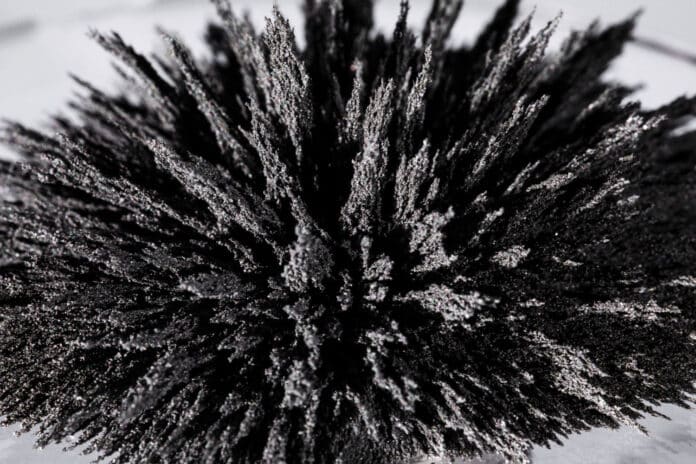
By Ashwini Sakharkar 7 Dec, 2024
Collected at: https://www.techexplorist.com/rice-hull-ash-could-help-batteries-store-more-charge/94267/
Recent research has unveiled the presence of hard carbon in rice hull ash, presenting an affordable, domestic solution that can effectively replace graphite in battery anodes for lithium-ion or sodium-ion technology.
A detailed analysis of ash from burned rice hulls, which is the hard outer layer of rice grains, showed the presence of carbon that has the potential to nearly double the energy density found in standard lithium-ion or sodium-ion batteries. This sustainable source of ‘hard’ carbon, which surpasses typical graphite in battery electrodes, was identified at the University of Michigan.
This finding marks the first demonstration of hard carbon produced through combustion, challenging previous beliefs that hard carbon could only be generated by heating biomass, such as agricultural waste, to approximately 1200°C (2200°F) in an oxygen-free environment like nitrogen or argon.
Instead of relying on imported graphite from China or Mexico, rice hull ash has the potential to provide a higher quality domestic material for making battery electrodes. The process is also more sustainable than producing graphite from biomass, which requires heating to a staggering 2000°C (3600°F) or higher—resulting in the emission of five to 10 tons of CO2 for every ton of battery-grade graphite produced.
While the majority of rice hulls are disposed of in landfills, burning rice hulls provides a carbon-neutral method for generating electricity. Wadham Energy LP, located in California’s Sacramento Valley, generates 200,000 megawatt-hours of electricity per year by burning the agricultural byproduct—enough energy to power about 22,000 homes.
“The CO2 released while burning rice hulls comes from the same CO2 the rice plant took up from the atmosphere during photosynthesis, making the electricity produced green and carbon neutral,” said Richard Laine, U-M professor of materials science and engineering and macromolecular science and engineering and corresponding author of the study.
With approximately 20 billion pounds of rice cultivated each year in the United States, there is significant potential for expansion. Previous research efforts have successfully demonstrated how to partially extract silica from rice hull ash, which is comprised of around 90% silica and 10% carbon. That silica can be used to produce high-purity silicon used in solar cells or semiconductors.
Once the silica is partially removed from the rice hull ash through a process called depolymerization, the remaining ash is about 60%-70% carbon. Initially, the leftover carbon was perceived as shapeless and disorganized, classified as amorphous carbon due to X-ray diffraction patterns.
However, advanced spectroscopy methods focused on molecular details uncovered tiny graphite islands on the nanoscale (with one nanometer equating to one billionth of a meter) embedded within the amorphous carbon structure. This unique combination of amorphous carbon containing graphite features is referred to as hard carbon.
“Hard carbon can be produced by combustion in this case because as you burn away the carbon of rice hulls, you create a shell of silica around the remaining carbon, and it bakes it like a pie,” Laine said.
The research on the electrochemical properties of hard carbon derived from rice hull ash reveals impressive results, showing it outperforms commercial hard carbon and graphite as a lithium-ion battery anode. While commercial hard carbon can store around 500 milliampere-hours (mAh) of lithium, and graphite holds about 370 mAh, the hard carbon from rice hull ash boasts a remarkable capacity exceeding 700 mAh—almost double that of graphite.
This superior performance is likely attributed to the nanoporous structure of the hard carbon, which enhances lithium capacity. This innovative use of agricultural waste not only provides a cost-effective battery material but also poses a solution to meet the increasing demand for batteries in electric vehicles and renewable energy storage while reducing emissions.
The research team has sought patent protection through U-M Innovation Partnerships and is looking for partners to help commercialize the technology. Additionally, co-author Sylvio Indris from the Karlsruhe Institute of Technology in Germany contributed to this study, with Wadham Energy providing the rice hull ash used in the research.
Journal reference:
- Mengjie Yu, Man Wang, Sylvio Indris, Jason Manassa, Alex Stangel, Robert Hovden, Richard M. Laine. An Unexpected Source of Hard Carbon, Rice Hull Ash, Provides Unexpected Li+ Storage Capacities. Advanced Sustainable Systems, 2024; DOI: 10.1002/adsu.202400667

Leave a Reply